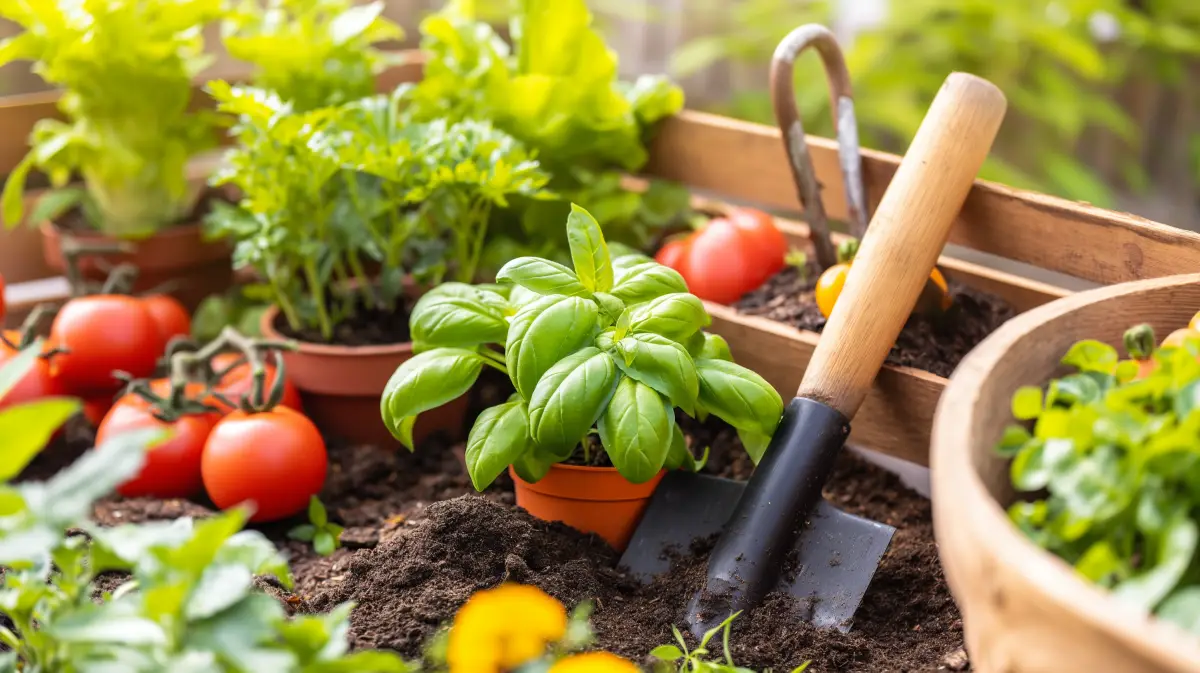Beginner's Guide to Planting an Herb & Vegetable Garden

Starting a vegetable garden can be a rewarding and fruitful endeavor. Whether you have a spacious backyard or just a small patio, here’s a comprehensive guide to get you started on your journey to growing your own vegetables.
1. Choose the Right Location
Selecting the perfect spot for your vegetable garden is crucial. Most vegetables need at least 6-8 hours of direct sunlight each day. Ensure your chosen area is level, well-drained, and conveniently accessible for regular maintenance.
2. Prepare the Soil
Good soil is the foundation of a successful vegetable garden. Test your soil to determine its pH and nutrient levels. Amend the soil with organic compost, bone meal, or other natural fertilizers to ensure it is rich in nutrients. Loamy soil with good drainage is ideal for most vegetables.
3. Plan Your Garden Layout
Design your garden layout to optimize space and plant growth. Consider the mature size of each plant, and arrange taller plants like corn or trellised beans on the north side to prevent them from shading shorter plants. Stagger your plantings to ensure a continuous harvest throughout the growing season.
4. Choose Your Plants
Select vegetables that you and your family enjoy eating. Start with easy-to-grow varieties such as lettuce, radishes, peas, beans, and carrots. You can begin with seeds or buy seedlings from a local nursery. Pay attention to the planting seasons for different vegetables; cool-season crops are planted in early spring, while warm-season crops are planted after the last frost.
5. Planting
Follow the instructions on seed packets for planting depth and spacing. Ensure that seedlings are planted at the same depth they were in their pots. Water thoroughly after planting to help establish strong roots.
6. Watering and Fertilizing
Water your garden consistently, aiming for deep watering sessions rather than frequent light watering. This encourages deep root growth and improves plant resilience. Use a balanced fertilizer or compost to provide essential nutrients, but avoid over-fertilizing, which can harm plants.
7. Pest and Disease Management
Keep an eye out for common garden pests like aphids, slugs, and caterpillars. Employ natural pest control methods such as companion planting, handpicking pests, or using organic pesticides. Ensure good air circulation and proper spacing to prevent diseases like powdery mildew and blight.
8. Harvesting
Harvest your vegetables when they are ripe to enjoy the best flavor and texture. Different vegetables have different harvesting times, so refer to specific guidelines for each type. Regular harvesting also encourages plants to produce more.
9. Maintaining Your Garden
Regular maintenance is key to a thriving garden. Weed your garden regularly, monitor for signs of pests or diseases, and provide support for climbing plants. Mulching can help retain soil moisture and suppress weeds.
10. Enjoy the Process
Gardening is a continuous learning experience. Don’t be afraid to experiment and make adjustments as you go. Enjoy the process of nurturing your plants and reaping the rewards of your hard work.
Starting a vegetable garden can be a fulfilling way to enjoy fresh produce and connect with nature. With careful planning and regular care, you can cultivate a thriving garden that provides delicious and nutritious vegetables throughout the growing season.


